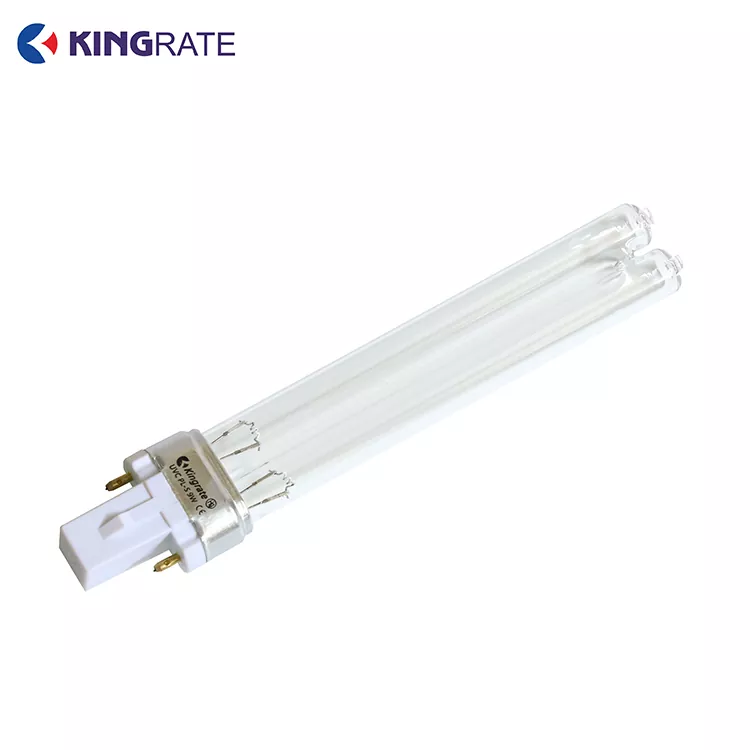How Often Should People Replace a UV Lamp for Best Performance?
2025-10-28
UV Lamp performance gradually decreases over time due to the natural degradation of the phosphor coating and mercury content. Our team at Kingrate Lighting Technology Co, Ltd. has found that even when a UV Lamp appears functional, its effective output can drop significantly after several thousand operating hours. Our factory emphasizes that maintaining consistent UV intensity is essential for sterilization, curing, and other applications.
Factors Affecting UV Lamp Replacement
The frequency of UV Lamp replacement depends on multiple factors, including usage hours, operating temperature, and environmental conditions. At our factory, we monitor lamps under high-temperature or high-humidity environments to determine optimal replacement schedules. Our UV Lamp models are designed to sustain performance under continuous operation, but we recommend replacement before output falls below 80% of initial intensity to ensure efficiency and safety.
Technical Specifications of Our UV Lamps
Our UV Lamp series provides reliable output, energy efficiency, and long lifespan. The following table summarizes key parameters of typical models supplied by Kingrate Lighting Technology Co, Ltd.:
| Model | Power (W) | Wavelength (nm) | Rated Life (hours) | Dimensions (mm) | Application |
| UVL-36W | 36 | 254 | 9000 | 600x20 | Water Sterilization |
| UVL-55W | 55 | 254 | 12000 | 800x25 | Air Purification |
| UVL-80W | 80 | 254 | 15000 | 1200x30 | Surface Sterilization |
| UVL-120W | 120 | 254 | 18000 | 1500x40 | Industrial Applications |
Our factory ensures that every UV Lamp is tested for UV intensity, stability, and energy consumption before shipment. This guarantees our products consistently meet performance expectations across multiple applications.
Signs That a UV Lamp Needs Replacement
Even with proper operation, UV Lamps show signs of reduced performance over time. Our experts at Kingrate Lighting Technology Co, Ltd. suggest replacing a UV Lamp if users observe longer sterilization cycles, decreased curing efficiency, or visible degradation of the glass tube. Our factory also recommends monitoring accumulated operating hours and adhering to manufacturer guidelines to prevent unexpected performance loss.
Best Practices for Extending UV Lamp Life
Proper handling, cleaning, and installation can extend UV Lamp life. Our factory advises keeping lamps free from dust, avoiding frequent on/off cycling, and ensuring secure electrical connections. Regular inspection and timely replacement help maintain consistent performance and protect equipment efficiency. At our factory, we provide detailed manuals to support end-users in maximizing UV Lamp longevity while achieving optimal output.
FAQ: How Often Should People Replace a UV Lamp for Best Performance?
Q1: How often should people replace a UV Lamp?
A1: Typically, UV Lamps should be replaced every 9,000 to 18,000 hours depending on model and application. Our factory recommends replacement before intensity drops below 80% to ensure sterilization and curing efficiency.
Q2: What factors affect the replacement schedule of a UV Lamp?
A2: Operating hours, temperature, humidity, and environmental exposure influence replacement frequency. Our factory monitors these factors to provide optimal guidelines for each UV Lamp model.
Q3: How can users know if a UV Lamp is underperforming?
A3: Signs include slower sterilization, reduced curing speed, and visible discoloration of the lamp tube. Our factory advises routine intensity checks and following scheduled replacement intervals to maintain performance.
Conclusion
Replacing a UV Lamp at the appropriate interval is essential for maintaining efficiency, safety, and consistent performance. At Kingrate Lighting Technology Co, Ltd., our UV Lamp products are engineered for durability and high output. Our factory ensures rigorous testing and quality control so that our customers can rely on our lamps for long-term applications. By adhering to proper maintenance and timely replacement schedules, users can maximize the lifespan and effectiveness of their UV Lamps in every setting.



